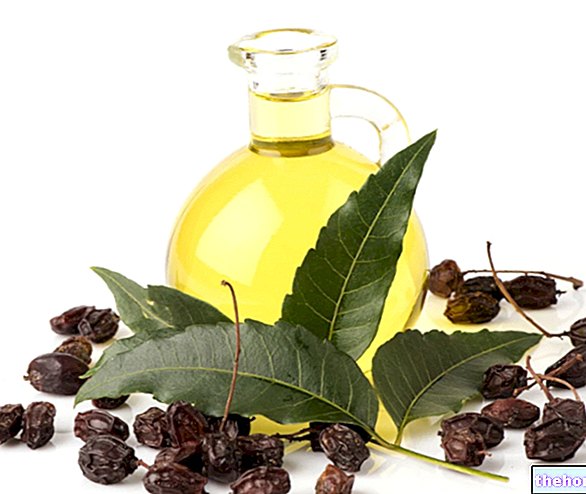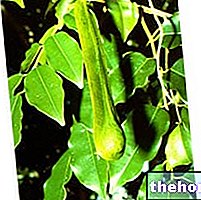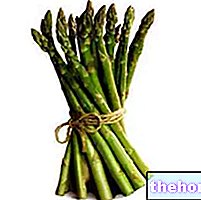Salvia officinalis
Fam. Lamiaceae (Labiatae)
Common Sauge, great sauge
Ted. Salbey
Ing. Sage
Spag. Sage
In the world there are 750 species of Sage
Description
Sage is a suffrutice, evergreen with a bushy habit.
Erect stem, 50.60 cm high, woody at the base, herbaceous and tomentose at the apex.
Leaves: opposite and petiolate at the base, sessile at the apex, oval-lanceolate, with a wedge-shaped base in the lower ones, rounded in the others; obtuse apex, serrated edge; silvery surface due to the presence of hairs.
Root: fusiform, robust, fibrous.
Flowers: tubular, blue or white-purple, in spikes of 5-10 to form terminal spikes, which appear from May to July. The flowers are typically bilabiate, the stamens are inserted at the base of the corolla and generally only 1 pair is fertile. The ovary is superior, divided into 4 lobes.
Fruits: tetrachenes that contain the tiny brown ovoid seeds

Areal
Native to southern Europe, sage is widespread in temperate areas all over the world; it grows up to 750 m of altitude.Culture
Sage prefers a soft and calcareous soil, but also adapts to an arid and stony substratum; it does not fear drought but cold and stagnant water, in the presence of which the leaves blacken.
New plants can be obtained by sowing (5-15 kg / ha), or by semi-woody cuttings taken in late spring or by division of the tufts, to be carried out in autumn. Sage requires a sunny and warm location. Sage bushes want to have some space for their roots, and if they don't have a chance to expand, the leaves become yellow. To obtain compact shrubs it is good to prune them often, but without ever touching the woody part. Excessive pruning leads to the deterioration of the tufts which are generally renewed every 4 or 5 years.
Sage can be grown in pots, as long as the soil is sandy and also in an apartment, as long as it is in a very bright position. It is very sensitive to frosts so it is good to protect it during the winter. Yield / ha: 10-20 t.
Harvest: the best time to harvest the leaves is just before flowering: drying must take place slowly and in the shade. The flowering tops are to be picked by cutting also a herbaceous portion of the stem. Conservation: the leaves and flowers are kept in hermetically sealed jars: thus they will keep their characteristics intact for about 3 years.
Drug: are the leaves and the flowering tops.
Active principles: sage essential oil, tannins, organic acids, rosmarinic acid, estrogen and bitter compounds
Uses
In phytotherapy, sage is used for its properties stimulating the functions of the intestine and gall bladder. On the respiratory system it has a balsamic and expectorant effect and is also beneficial in excesses of asthma. Other interesting properties are those of lowering blood sugar, decreasing sweating due to general weakness, acting favorably on certain ovarian disorders.
For external use, sage is antiseptic and slightly astringent. Ancient medicine has used it as a powerful healing agent on wounds and sores that are difficult to heal; the most valid domestic use is for the oral cavity and throat (soft gums and bleeding, redness and ulcers, bad breath). The most surprising effect is in the treatment of respiratory ailments: dried leaves mixed with honey or boiled in milk have an immediate effect; gargling with the infusion can fight tonsillitis.
In cosmetics: the fresh leaves rubbed on the teeth make them whiter and purify the breath. The sage decoction is used, in the rinsing phase, to maintain the color of dark hair and when tapped on the skin of the face it has a cleansing and astringent function. anti-dandruff properties, based on the stimulation of the hair papillae, it is also anti-perspiration and antiseptic. In dietetics: sage is very appreciated because it adds flavor to many dishes and digestibility to fatty meats. It is usually considered useless to mix it with other aromas, as its strongly dominant perfume cancels the others. It is also used for its antioxidant properties.
Contraindications: the essential oil or too concentrated preparations of sage internally can cause serious nervous disorders and severe poisoning.
Select plant Fir Acacia Acerola Sorrel Yarrow Yarrow Yarrow Aconito Adatoda Garlic Agnocasto Agrimonia Alchemilla Alkekengi Aloe Altea Witch Hazel Ammi or Visnaga Pineapple Andrographis Anemone Pulsatilla Angelica Anise Star Anise Japanese Star Anise Bitter Orange Bitter Areca Arnica Harpagophytum Arpagophyte Artemisia Asteragus Basil Asparagus Asparagus Peruvian Asparagus Asparagus Asparagus Hawthorn Boldo Borage Shepherd's Purse Boswellia Bucco Butea superba Cocoa Coffee Cajeput Calamus Calamus Marigold Camedrio Chamomile Roman Chamomile Camphor Cinnamon Ceylon Maidenhair Capuchin Artichoke Cardamom Cardiac Thistle Asian Thistle Carvi Cascara Cassia Catecu Catha Cabbage Celandine Chicory Centaurea Cinnamon Cypress Celandine Chives Cypress Coca Cola Colchico Combreto Condurango Comfrey Coriander Cranberry Barberry American Chrysanthemum Cumin Turmeric Damiana Digital Dioscorea Drosera Dulcamara Dunalilella Echinacea Eder a Ephedra Elenio Eleutherococcus Helichrysum Evening primrose Horsetail Alfalfa Erica Euphrasia Erisimo Escolzia Eucalyptus Farfara Farfaraccio Calabar bean Fenugreek Fennel Phytolacca Frangola Ash Fumaria Japanese Mushrooms Galega Ganoderma lucidum Garcinia Cambogia Mulberry Gentian Broom Ginkgo Ginkgo Guipana Guipana Gynestra Ginkgo Hibelia Gymnasium Hibiscus Guarulp St. John's Wort Horse Chestnut Ispaghul Hyssop Jaborandi Kava kava Konjac Laminaria Cherry Laurel Lavender Lemongrass Lespedeza Lovage Icelandic Lichen Lemon Flax Lippia Licorice Lobelia Hops Maca Marjoram Maize Mallow Manna Marrubio Marrubio d "water Matè Melaleuca Meliloto American Lemon balm Myrtle Myrama Walnut Nutmeg Walnut vomica Olive tree Meadowsweet Ononide Opuntia Oregano Orthosiphon Nettle Poppy Papaya Parietaria Feverfew Passiflora Chilli Perilla Periwinkle Phyllanthus Plantain Picrorhiza Pilosella Pino Pisci dia Podofillo Polygala Grapefruit Parsley Psyllium Pueraria mirifica Butcher's broom Pygeum Quassia Oak Rhubarb Ratania Rauwolfia currant Castor bean Rhodiola Rosehip Rosemary Rue Willow Sarsaparilla Sage Elderberry Sassafras Sedum Ergot Senna Serenoa Repens Soybean Solidago Tansy Taraxus Tamarind Tamarind Tamarind Tamarind Tamarindo Ursina Valerian Vanilla Mullein Verbena Veronica Viburnum Vinca Pansy Mistletoe Vine Withania Yohimbe Saffron Ginger Pumpkin Select disease Juvenile Acne Rosacea Tinnitus Tinnitus Aerophagia Tendon Affections Afonia Aphthae Algias Functional Halitosis Breastfeeding Allergy Anemia Anguish Anxiety Arteriosclerosis Asthrosis Asthrosis Arthritis Arthritis Men Sex Woman Blepharitis and Conjunctivitis Eye bags Bronchitis Gallstones Kidney stones Salivary stones Baldness Androgenetic Candida Fragile hair Caries Headache Cellulitis Motion sickness Cystitis C limaterio Cholecystopathy High cholesterol Ulcerative colitis Colonoscopy Contusions Hematoma Convalescence Couperose Depression Dermatitis Diaper dermatitis Diabetes Diarrhea Erectile dysfunction Dyslipidemia Dysmenorrhea Dyspepsia Disturbances of vision Hemorrhoids Epistaxis Herethism Heart disease Fever Fibromyalgia Gastro-intestinal disease Flatulence Hypertension Fibromyalgia Gastrointomnia Jaundice Laryngitis Renal lithiasis Toothache Sore throat Thinness Menopause Meteorism Mononucleosis Alzheimer's disease Crohn's disease Nausea Vomiting Obesity Dark circles Onychomycosis Osteoporosis Dry skin Periarthritis Piorea Low pressure Prostatitis Psoriasis Colds Breast fissures Anal fissures Gastro-nasal rhinitis Senescence Premenstrual Syndrome Sinusitis Quit smoking Overweight Fatty liver Constipation Stomatitis Stress Cough Triglycerides high Ulcer Burns Nails Brittle flashes Heat Warts Dizziness Properties herbal Tanning Abortive adaptogenic Aphrodisiac bittering analgesic anesthetic anorectics analgesic antacid anti-allergic anti-asthmatic Antibiotic catarrh Anticellulitiche anticonvulsant Antidiaforetiche antidiarrheal edematous anthelmintic antiemetic Antiemorroidarie antiphlogistic Antiidrotiche Antinevrotiche Antioxidants antipyretic antirheumatic antiscorbutic Antiseptic antispasmodic anti-uric Aperitive Flavoring Astringent Balsamic Bechiche Capillarotrope Cardiotonic Carminative Cathartic Caustics Healing Cholagogues Choleretic Dyes Decongestants Deodorants Purifying Diaphoretic Cleansers Disinfectants Detoxifiers Thirst quenching Diuretics Exciting Emetics Emmenagogues Emollients Hemostatic Energies Hepatoprotectors Expectorants Eupepticus Moisturisers Galactosensitizers lanti Hypertensive Hypnotic Hypoglycemic Hypotensive Irritants Laxatives Soothing Narcotic Nerves Nutrients Odontalgic Pectoral Purgative Revulsive Remineralizing Refreshing Rubefacient Scialagoghe Sedative Soporifugas Sneezing Stomachic Stomatics Narcotic Vascular Tightenitis




























